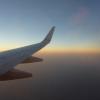Well, I've been practicing a lot with HLSL lately, and I've always wanted to make some decent water. I tried the usual technique of animated normal maps, and it's awesome! I'm using the same normal map tiled twice, with different texture coordinates each time, which removes the need for two different normal maps.
[attachment=15885:WaterNMap2.jpg]
[attachment=15886:WaterNMap1.jpg]
Anyway, just thought I'd make this post because I'm pretty pleased with the results.
Also, here's a video (probably more useful!):





